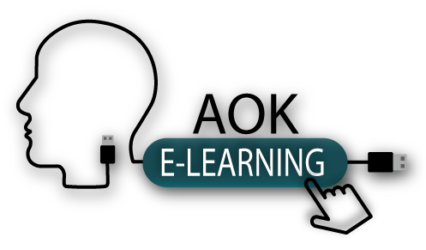10 Aspen Lane, Gorham, ME 04038
kirkjohnb5@gmail.com
Web: www.aokbasicskills.gratis
3/12/2024
Food and Nutrition Service (FNS)
ATTN: Policy and Program Development Division
3101 Park Center Drive
Alexandria, VA 22302
RE: A required, overview presentation with a simple food preparation system for SNAP
Dear Food and Nutrition Service:
I am writing with suggestions for SNAP. Several of the major goals of the Supplemental Nutrition Assistance Program (SNAP) are to “help participants avoid hunger and malnutrition” and to “improve their diets”. Presently, SNAP is doing a fair job helping about 12% of the U.S. population with its program, and with the proposed SNAP Nutrition Security Act of 2023, the program will be even better. However, I have some suggestions that I hope you will consider.
A short, required presentation might help a lot of people
First, as I understand it, you don’t have a required presentation that the participants need to take to receive their benefits. As relates to practical instruction, they could be offered an introductory online presentation with access to see it again that shows them how to buy and prepare healthy food on a budget with the requirement that they at least see the presentation to begin receiving their food funds. It could link-in to sites that go deeper into the topics discussed.
It’s true that some adults might lack the education or the interest necessary to understand it, but on the other hand, many do have the ability or have someone in their homes who could explain the basic subject matter.
If only 70% of the total SNAP participants benefited from seeing the presentation, that’s still about 20 million people. This doesn’t include the 7 million who qualify for SNAP but don’t participate (PBS Nightly Newshour, 3/11/2024). It’s hard to imagine the U.S. government offering a $125 billion food support system to those in need without even the simple basic requirement of seeing a 60-minute online presentation that provides them with an overview of how to use it. The same is true for the potential food & nutrition help from the Child Tax Credit, another expensive government program that only has financial requirements.
SNAP internet materials could also help those who don’t qualify
Also, there are many millions of U.S. citizens and possibly 15 million undocumented U.S. aliens and asylum seekers who don’t qualify for SNAP funds but who could greatly benefit from the proposed presentation and linked-in materials. About 12.8% of American households have food insecurity (USDA, 2022) and about half of the population in the U.S. has poor diets (American Journal of Clinical Nutrition, 7/20/2020).
The primary reasons are no doubt related to education, but in the case of immigrants, many of them mostly only have experience using food markets rather than supermarkets for purchasing their food.
Why not include a simple, fast food preparation system usable for a biweekly menu in the USDA or SNAP internet materials?
Second, along with the required presentation mentioned above, SNAP could include an easy food preparation system such as where participants could list basic foods they like in six nutritional columns – proteins, grains, vegetables, sauces, herbs and spices, and toppings. For some of their meals for difficult days, they could cook some of these foods for the week in advance, mixing and heating them in the form of one-dish meals and effectively making their own recipes. This is a simple, fast system that is not only ethnically adaptable but also easy for all to use.
To conclude, I feel that a required introductory online presentation that shows participants how to buy and prepare healthy food on a budget should be considered for SNAP recipients. To see an example of such a presentation, please see the English section of my website at www.aokbasicskills.gratis in the subsection entitled “Whole Food Workshops” and the workshop entitled “Healthy Foods for Busy People”. It can also be found in the Spanish section.
Thanks for your time and consideration.
Sincerely,
John B. Kirk
A.A.S. Dietetic Technician, B.A., M.S. Ed, MATESL
CC: Senators Susan Collins & Angus King
April 3, 2024
John Kirk
Gorham, ME 04038-2658
Dear John,
Thank you for writing me expressing your support for nutrition assistance programs in the Farm Bill. As Vice Chair of the Senate Appropriations Committee and a founding member of the Senate Hunger Caucus, I appreciate hearing from you, and I appreciate your sharing your ideas to improve the SNAP program.
I recognize the important role that federal nutrition assistance programs play in the fight against hunger, including the Supplemental Nutrition Assistance Program (SNAP), the Special Supplemental Food Program for Women, Infants, and Children (WIC), and the Emergency Food Assistance Program (TEFAP). As a senior member of the Senate Appropriations Committee, I have consistently supported flexibilities and funding for these indispensable programs.
The fiscal year 2023 government funding bill, which I supported, included a permanent Summer Electronic Benefits Transfer (EBT) program that provides direct assistance to families to offset the costs of meals in summer months when schools are closed. Most recently, I supported the fiscal year 2024 government funding bill, which includes more than $122 billion for SNAP. It also includes $7 billion for WIC, a more than $1 billion increase.
You may be interested to know that both the Senate Committee on Agriculture, Nutrition, and Forestry and the House Agriculture Committee are working to draft the Farm Bill, which authorizes funding for federal nutrition programs. During negotiations for the 2018 Farm Bill, I worked to prevent changes that would have limited eligibility for SNAP.
Please be assured that I will continue to support funding for critical nutrition assistance programs. Again, thank you for contacting me on this important issue.
| Sincerely, |
Susan Collins, U.S. Senator

